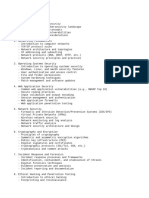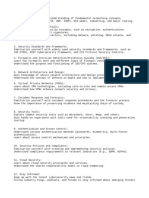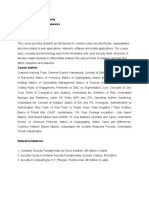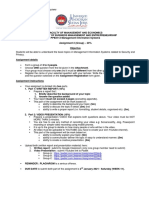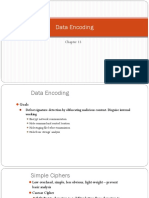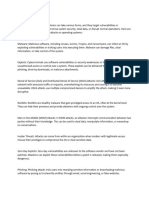0% found this document useful (0 votes)
51 views3 pagesCybersecurity Introduction
The document provides an overview of cybersecurity, including its definition, key concepts like the CIA Triad, and various cyber threats. It covers essential IT concepts, types of malware, cybersecurity defenses, security policies, risk management, and access control. Additionally, it introduces security tools, basic penetration testing, and resources for further learning in the field.
Uploaded by
arulraj90Copyright
© © All Rights Reserved
We take content rights seriously. If you suspect this is your content, claim it here.
Available Formats
Download as DOCX, PDF, TXT or read online on Scribd
0% found this document useful (0 votes)
51 views3 pagesCybersecurity Introduction
The document provides an overview of cybersecurity, including its definition, key concepts like the CIA Triad, and various cyber threats. It covers essential IT concepts, types of malware, cybersecurity defenses, security policies, risk management, and access control. Additionally, it introduces security tools, basic penetration testing, and resources for further learning in the field.
Uploaded by
arulraj90Copyright
© © All Rights Reserved
We take content rights seriously. If you suspect this is your content, claim it here.
Available Formats
Download as DOCX, PDF, TXT or read online on Scribd
/ 3
